Animals are truly fascinating creatures, and today, we will dive into the world of the Greater Swiss Mountain Dog. This incredible animal has a rich history, interesting facts, and unique characteristics make it stand out among other dog breeds. So, let’s explore the captivating information about this fantastic animal!
The Greater Swiss Mountain Dog, a GSMD, is a large and sturdy breed from Switzerland. These dogs were initially bred for working purposes, mainly assisting farmers in their daily tasks. They were excellent at pulling carts, herding livestock, and guarding property. Their strength, endurance, and intelligence make them highly valuable in various settings.
In terms of size, the Greater Swiss Mountain Dog is considered a giant breed. They typically weigh between 85 and 140 pounds (39-64kg) and stand about 23 to 28 inches (58-71cm) tall. Their muscular build and robust structure make these dogs well-suited for various physical activities. Their short coat, which is thick and dense, adds to their overall majestic appearance.
The Greater Swiss Mountain Dog is classified as a working dog and belongs to the working group category. This classification is associated with dogs with solid work ethics and excelling in tasks requiring physical strength. These beautiful dogs are loyal, gentle, and great with families. Their affectionate nature and willingness to please make them excellent companions and beloved family pets.
So, get ready to dig deep into the captivating world of the Greater Swiss Mountain Dog. This blog post will explore its history, reveal fascinating facts, investigate its size and habitat, and discuss its classification. By the end of this reading, you will have a newfound admiration for this remarkable animal. Remember that if you are interested in other animal species, we already have an extensive article covering 155+ Animals Names. Let’s begin this fantastic journey!
History of Greater Swiss Mountain Dog

The history of the Greater Swiss Mountain Dog goes back a long time. It is believed that this breed originated in the Swiss Alps thousands of years ago. They were originally bred as working dogs by Swiss farmers and were used to help with tasks such as herding livestock, pulling carts, and guarding their owner’s property. These dogs were strong, loyal, and had a great work ethic, making them perfect for their assigned jobs.
Over time, the Greater Swiss Mountain Dog became less common as farming practices changed, and technology took over many of the tasks these dogs used to do. However, dedicated breeders and enthusiasts worked hard to preserve the breed, and in the 20th century, it started to gain more popularity again. Today, the Greater Swiss Mountain Dog is still used for some working purposes, such as search and rescue and therapy work, but they are primarily beloved as family pets and show dogs.
These dogs are known for their gentle and friendly nature, as well as their intelligence and loyalty. They are large and powerful, with a black coat and white and rust-coloured markings. Despite their size, they are good with children and other pets, making them an excellent choice for families. They require regular exercise and grooming to keep them healthy and happy. The Greater Swiss Mountain Dog is a breed with a rich history and a bright future, valued for its versatility, beauty, and devotion to its family.
Importance of Greater Swiss Mountain Dog
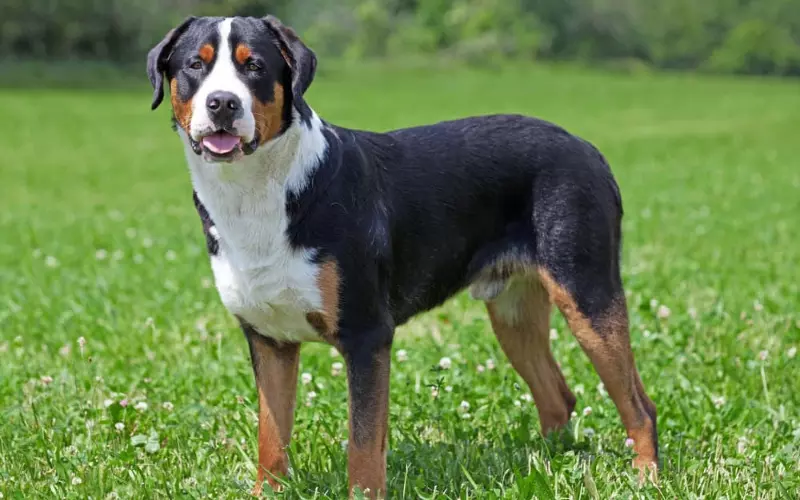
The Greater Swiss Mountain Dog is a unique animal that plays a vital societal role. Firstly, they have been loyal companions to humans for many years. They are known to be friendly and affectionate towards their owners, making them great family pets. These dogs are also very protective, always looking out for their loved ones and ensuring they are safe. This makes them a trustworthy and reliable friend to have around.
Secondly, these dogs are also excellent working animals. They have a solid and robust build, making them ideal for tasks such as pulling heavy loads or guarding property. Their intelligence and trainability further enhance their effectiveness as working dogs. For example, they can be trained to assist in search and rescue missions or even as therapy dogs. Their versatility and willingness to work hard make them valuable community members.
Lastly, Greater Swiss Mountain Dogs are admired for their beauty and majestic appearance. With their striking markings and muscular physique, they are indeed a sight to behold. Many people find joy and comfort in simply observing these magnificent creatures. Their presence in our lives adds beauty and warmth to our surroundings.
The Greater Swiss Mountain Dog is not just an ordinary animal – they are companions, workers, and a beautiful part of our world. They bring joy, protection, and help to those around them, making them an essential and cherished member of our society.
Amazing Facts About Greater Swiss Mountain Dog

1. The Greater Swiss Mountain Dog is a large breed of dog that originated in Switzerland.
2. It is one of the oldest and largest Swiss dog breeds.
3. These dogs were historically used to pull carts, guard livestock, and serve as working dogs on farms.
4. They have a strong build, muscular body, and broad chest.
5. The breed has a thick double coat with a medium-length outer coat and a dense undercoat to protect them in cold weather.
6. The colour of their coats is typically black with white and tan markings on their face, chest, and paws.
7. Greater Swiss Mountain Dogs have a gentle and friendly personality, making them great family pets.
8. They are known for being affectionate, reliable, and fond of children.
9. To stay healthy and happy, These dogs require regular exercise, including daily walks and playtime.
10. Greater Swiss Mountain Dogs are generally calm and well-behaved indoors despite their size.
11. They are intelligent and trainable, although they can sometimes be stubborn.
12. This breed tends to get along with other pets if properly socialized from a young age.
13. Greater Swiss Mountain Dogs are generally healthy but may be prone to certain genetic conditions, such as hip dysplasia and bloat.
14. They have a life expectancy of around 10 to 12 years.
15. The Greater Swiss Mountain Dog is a loyal and devoted companion that thrives in an active and loving environment.
Can we keep a Greater Swiss Mountain Dog as our Pet?

The Greater Swiss Mountain Dog is a magnificent animal known for strength, loyalty, and gentle nature. However, it is essential to note that keeping this breed as a pet may not be suitable for everyone. These dogs are large, averaging around 100 pounds, and require ample space and exercise to be happy and healthy. Their size alone can make them challenging to handle for some people.
Unfortunately, there is no need to worry about the extinction of Greater Swiss Mountain Dogs, as they are not an endangered species. However, it is essential to consider other factors before deciding to bring one into your home. These dogs need a lot of attention, care, and proper training. They also shed quite a bit and require regular grooming to keep their coats in good condition.
While the Greater Swiss Mountain Dog is a beautiful and impressive breed, it may not fit every family best. The size and needs of these dogs may not be suitable for those who do not have enough space, time, or resources to care for them properly. It is crucial to thoroughly research and consider all aspects before getting any pet, ensuring we can provide them with the love, care, and environment they need to thrive.
Size of Greater Swiss Mountain Dog

The Greater Swiss Mountain Dog is a big and strong animal. It is one of the largest dog breeds in the world. These dogs can grow to be very tall and heavy. They are known for their sturdy and muscular bodies.
A male Greater Swiss Mountain Dog can stand up to 28.5 inches tall at the shoulder. That is about the same height as a medium-sized coffee table! They can also weigh anywhere between 105 to 140 pounds. That is like having a big sack of potatoes in your house!
Females of this breed are slightly smaller, but they are still larger and heavier than most other dogs. A female Greater Swiss Mountain Dog can reach a height of 26.5 inches and weigh between 85 to 110 pounds. Can you imagine having a dog as tall and heavy as a big bookshelf?
The Greater Swiss Mountain Dog is a huge and powerful animal. They are much bigger and heavier than most other dogs. The males can stand almost as tall as a coffee table and weigh as much as a big sack of potatoes. Even the females are taller and heavier than many other breeds. So, if you ever come across a Greater Swiss Mountain Dog, be prepared to see one of the true giants of the dog world!
Habitat of Greater Swiss Mountain Dog

The Greater Swiss Mountain Dog comes from the Swiss Alps, majestic mountains in Switzerland. This beautiful animal lives in a habitat that is cool and snowy. The Swiss Alps are covered in thick snow blankets during winter, creating a winter wonderland for the Greater Swiss Mountain Dog.
Living in such a habitat requires the Greater Swiss Mountain Dog to have particular survival adaptations. Their thick fur keeps them warm in the cold weather, acting like a cosy blanket. This allows them to play and run in the snow without feeling cold. Their large paws help them navigate through the snow, acting like snowshoes. These paws also provide good traction, preventing them from slipping on the icy ground.
In addition to the snow-covered mountains, the Greater Swiss Mountain Dog habitat also includes lush green valleys and crystal-clear lakes. These dogs love running in these valleys and refreshingly dip in the lakes during the warmer months. The valleys provide plenty of space for them to exercise and play, while the lakes offer a chance to cool off from the summer heat.
Living in the Swiss Alps is a dream for the Greater Swiss Mountain Dog. The snowy mountains, green valleys, and beautiful lakes create the perfect habitat for this majestic canine. It is their natural home, where they can thrive and enjoy the wonders of nature.
Evolution of Greater Swiss Mountain Dog

The Greater Swiss Mountain Dog is a fascinating breed with a long history of evolution. This breed is believed to have descended from mastiff-type dogs that accompanied the ancient Romans when they invaded Switzerland 2,000 years ago. These large and powerful dogs served various purposes, such as working on farms and pulling heavy wagons. Over time, the Greater Swiss Mountain Dog we know today has emerged through selective breeding.
During the Middle Ages, these dogs were highly valued for their strength and versatility. They were popular among peasants and farmers for their ability to guard livestock and pull carts filled with goods. However, due to changes in agriculture and transportation, the demand for working dogs like the Greater Swiss Mountain Dog declined, pushing the breed towards extinction.
In the early 20th century, a Swiss cynologist named Albert Heim embarked on a mission to revive the breed. He studied the remaining Swiss farm dogs and identified the ones closest to the original Swiss Mountain Dogs. He successfully established the Greater Swiss Mountain Dog breed by selectively breeding these dogs. Today, this breed is known for its gentle temperament, loyalty, and impressive strength, making it a beloved companion and working dog in many parts of the world.
Over the centuries, the Greater Swiss Mountain Dog has come far from its ancient ancestors. Through the efforts of dedicated individuals, this breed has survived and thrived. Its history is a testament to the resilience and adaptability of dogs, showcasing their ability to evolve and find new roles alongside humans.
Classification of Greater Swiss Mountain Dog

The Greater Swiss Mountain Dog is a large and powerful breed of dog. They belong to the Working Group, which means they were originally bred to help humans with different tasks. These dogs are known for their strength, loyalty, and gentle nature.
In terms of physical characteristics, the Greater Swiss Mountain Dog is muscular and well-balanced. They have a strong build with a broad chest and a sturdy frame. Their coat is thick and double-layered, which helps protect them in cold weather. Their coat is usually black with distinct rust and white markings. With their intelligent eyes and kind expressions, they are genuinely a handsome breed.
Regarding temperament, the Greater Swiss Mountain Dog is known to be friendly and gentle. They are great with families and are especially good with children. These dogs are also known for their loyalty and protective nature, making them excellent watchdogs. They are confident and outgoing and love to be a part of family activities. With proper training and socialization, they can be well-behaved and obedient pets.
The Greater Swiss Mountain Dog is a beautiful breed under the Working Group. Their solid physical build and well-balanced temperament make them great companions and working dogs. Their loyal and gentle nature makes them ideal for families, and their protective instincts make them excellent watchdogs. The Greater Swiss Mountain Dog might be the perfect choice if you are looking for a big, strong, and loving companion.
How did the Greater Swiss Mountain Dog go extinct?
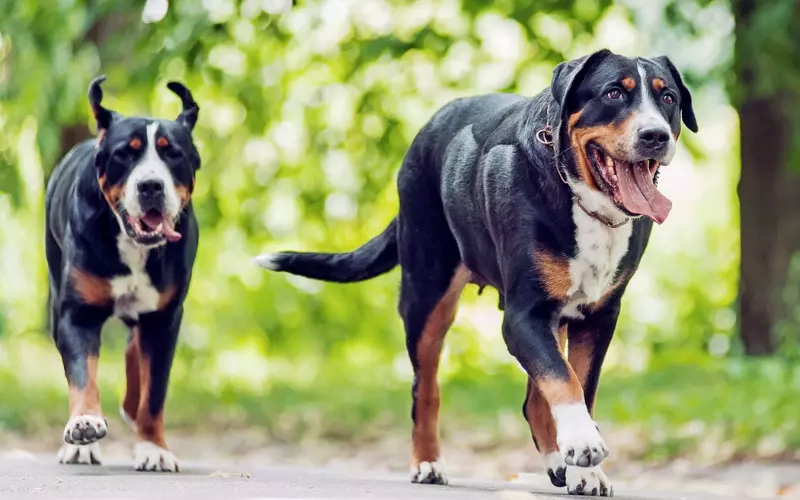
1. Description: The Greater Swiss Mountain Dog is a large and sturdy breed known for its muscular body, deep chest, and short double coat. They have a friendly and gentle expression and a strong and confident appearance.
2. History: This breed has a rich history that dates back to the Swiss Alps, where they were used for herding and guarding livestock. They were also known for their pulling abilities and were often seen as draft dogs.
3. Temperament: Greater Swiss Mountain Dogs have a calm and gentle nature, making them great family pets. They are known to be loyal, affectionate, and friendly towards children, making them excellent companions.
4. Exercise Needs: Greater Swiss Mountain Dogs require regular exercise to keep them happy and healthy due to their large size and active nature. Daily walks, playtime, and ample space to roam around are necessary to meet their exercise needs.
5. Training: This breed is intelligent and eager to learn, making training relatively easy. However, they can be stubborn sometimes, so consistent and positive reinforcement methods should be used for practical training.
6. Health: Greater Swiss Mountain Dogs are generally healthy, but like all breeds, they can be prone to specific health issues such as hip dysplasia and bloat. Regular vet check-ups, a balanced diet, and proper exercise can help ensure their overall well-being.
7. Lifespan: On average, Greater Swiss Mountain Dogs have a lifespan of 8-11 years. They can live a long and fulfilling life with proper care and a healthy lifestyle.
8. Grooming: The short double coat of this breed is relatively easy to maintain. Regular brushing to remove loose hair and occasional baths are usually sufficient to keep their coat clean and healthy.
9. Family Compatibility: Greater Swiss Mountain Dogs are known to be excellent family pets. They are gentle and patient with children and get along well with other pets, making them an ideal addition to any family setting.
10. Versatility: Apart from being wonderful family companions, Greater Swiss Mountain Dogs can excel in various activities such as obedience, tracking, and cart-pulling competitions. Their strong work ethic and versatility make them popular among dog enthusiasts.
Geographical Presence of Greater Swiss Mountain Dog

The Greater Swiss Mountain Dog is found in the region of Switzerland, which is a country located in Europe. This dog breed has a long history of working alongside farmers and herdsmen in the Swiss Alps. Their robust build makes them well-suited for pulling heavy loads and guarding livestock. They have a friendly and gentle nature, making them great family companions.
However, the Greater Swiss Mountain Dog is not found in all parts of the world. Due to its specific origins and purpose as a working dog in the Swiss Alps, this breed is not commonly found in other regions outside of Switzerland. Although it has gained popularity as a pet in some countries, it is still relatively rare compared to other dog breeds.
Responsible breeders often take great care in preserving the lineage of these dogs to protect their unique characteristics and maintain their breed standards. This means that the Greater Swiss Mountain Dog may not be readily available in all areas or easily accessible for everyone who wishes to adopt or purchase one. However, those who have the opportunity to bring one into their home can be wonderful companions with their loyal and loving personalities.
Scientific Name of Greater Swiss Mountain Dog
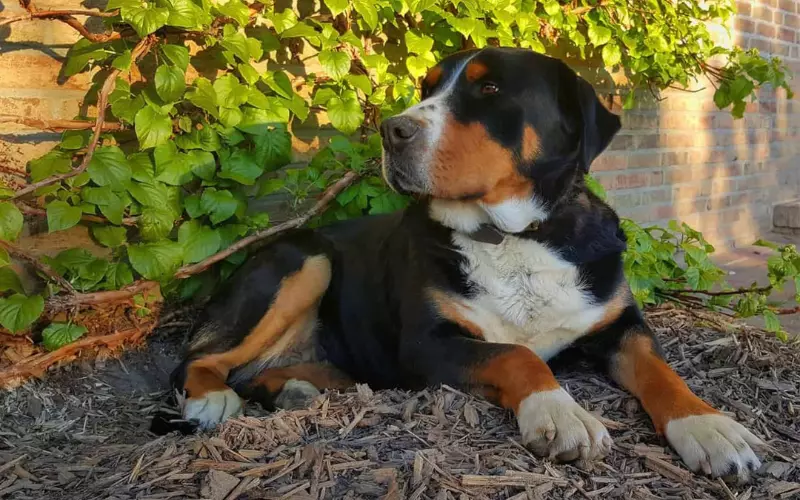
The scientific name of the Greater Swiss Mountain Dog is Canis lupus familiaris. This majestic canine belongs to Canis lupus, which includes other domesticated dog breeds. However, it is essential to note that the Greater Swiss Mountain Dog is a specific breed within this species.
The Greater Swiss Mountain Dog, or Canis lupus familiaris, is a large, sturdy working dog. They have a strong build, muscular body, and a friendly disposition. These dogs are known for their intelligence and are often trained for various tasks such as herding, guarding, and search and rescue operations.
The Greater Swiss Mountain Dog, scientifically known as Canis lupus familiaris, is a loyal and hardworking breed. They are part of the Canis lupus species, which includes all domesticated dogs. With their strong physique and intelligence, these dogs have become valued companions and reliable working partners for humans.
Diet of Greater Swiss Mountain Dog
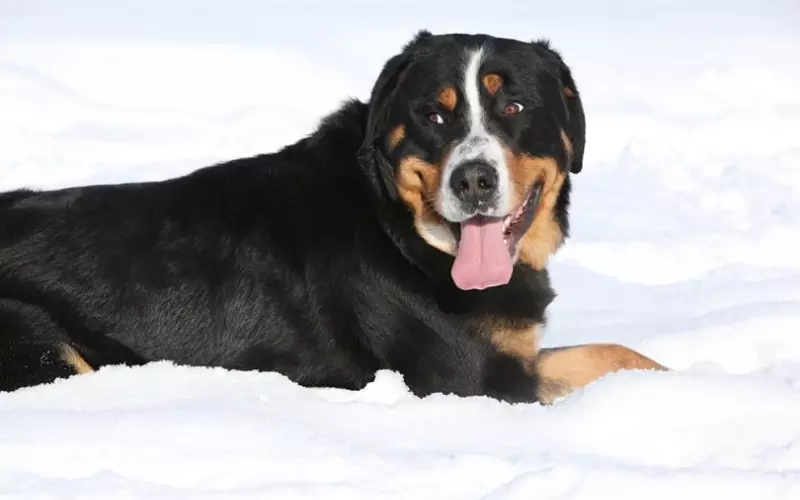
The diet of the Greater Swiss Mountain Dog is essential for their health and well-being. They need a balanced diet of protein, carbohydrates, fats, vitamins, and minerals. These dogs are muscular and strong, so they require enough nutrients to keep them active and fit.
Protein is an essential part of their diet as it helps to build and repair their muscles. Good protein sources for these dogs are lean meats like chicken, turkey, and beef. It is important to avoid feeding them fatty meats as it can lead to weight gain and other health issues.
Carbohydrates are an essential energy source for the Greater Swiss Mountain Dog. They can get carbohydrates from grains such as rice, oats, and barley. These grains provide the necessary energy for them to stay active and playful.
Fats are also essential for their diet, but providing them with healthy fats is essential. These can be found in fish oil, which is rich in omega-3 fatty acids. Omega-3 fatty acids are beneficial for their skin and coat health.
Lastly, they need a variety of fruits and vegetables to get their vitamins and minerals. Some good options are carrots, apples, and green beans. These provide essential vitamins and minerals for their overall health and immune system.
The Greater Swiss Mountain Dog needs a balanced diet of protein, carbohydrates, fats, vitamins, and minerals. Feeding them lean meats, grains, healthy fats, and fruits and vegetables will help them stay healthy, active, and happy.
Locomotion of Greater Swiss Mountain Dog

The Greater Swiss Mountain Dog is a strong animal. It has a unique way of moving called locomotion. Locomotion is how an animal moves from one place to another. The Greater Swiss Mountain Dog has a smooth and effortless gait when it walks or runs.
When the Greater Swiss Mountain Dog walks, it puts one foot in front of the other in a steady and rhythmic pattern. Its strong legs move straight from the shoulder to the ground. This helps the dog to walk with stability and balance.
When the Greater Swiss Mountain Dog runs, its hind legs propel itself forward with speed and agility. It can cover a lot of ground in just a few strides. Its solid muscles and long strides allow it to run quickly and smoothly.
The Greater Swiss Mountain Dog has a unique and efficient way of moving called locomotion. Its smooth and effortless gait helps it to walk and run with ease.
Social and Sexual Behaviour of Greater Swiss Mountain Dog
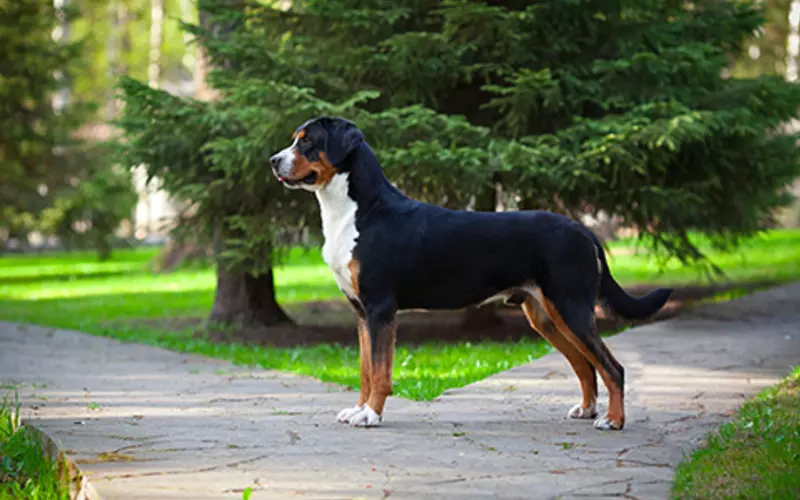
Greater Swiss Mountain Dogs, also known as Swissies, are friendly and pleasant animals. They enjoy being a part of a family and get along well with children and other pets. They have a gentle and patient nature, making them great companions. These dogs have a strong urge to please their owners and are always ready to learn and obey commands.
Regarding sexual behaviour, the Greater Swiss Mountain Dogs reach sexual maturity at around 18 to 24 months. The females enter heat, also known as estrus, twice a year for about three weeks. They may become more affectionate and attract males through their scent during this time. The males, on the other hand, become more interested in mating and may display dominant behaviour. Owners must be responsible and prevent unplanned breeding by spaying or neutering their pets.
Greater Swiss Mountain Dogs are loving and loyal companions known for their friendly nature. They adapt well to various social environments and get along with humans and other animals. Understanding their reproductive behaviour is crucial to responsibly caring for these beautiful animals and to ensure their well-being.
Reproduction and Lifecycle of Greater Swiss Mountain Dog

The Greater Swiss Mountain Dog is a strong animal with a fascinating life cycle. Like other dogs, these animals reproduce by a process called mating. A male dog, called a sire, mates with a female dog, known as a dam. During mating, the male dog’s sperm fertilizes the female dog’s eggs. This fertilization takes place inside the dam’s body.
After mating, the dam’s body starts to change. Just like humans, female dogs also go through pregnancy. The fertilized eggs grow and develop inside the dam’s womb. This development takes around 63 days. When the time is right, the dam gives birth to a litter of puppies. These puppies are small and helpless at first, and they depend on their mother for everything, just like human babies.
As the puppies grow, they go through different stages of development. They start by crawling and nursing from their mother. As they age, they learn to walk independently and explore the world. They also start eating solid food and become less dependent on their mother. At around eight weeks old, the puppies are usually ready to leave their mother and go to new homes, where they will continue to grow and learn.
The life cycle of a Greater Swiss Mountain Dog begins with mating between a male and a female dog. The female then goes through pregnancy and gives birth to a litter of puppies. These puppies grow and develop, becoming more independent before eventually leaving their mother and joining new families.
Threats to Greater Swiss Mountain Dog

The Greater Swiss Mountain Dog faces several threats that could harm their existence. One of the main threats is habitat loss. Humans often destroy the natural homes of these dogs by building roads, houses, and farms. This means the Greater Swiss Mountain Dog has less space to live and find food.
Another threat to the Greater Swiss Mountain Dog is hunting. Some humans hunt these dogs for their fur or meat, which is very sad. They are gentle creatures and do not want to cause harm to anyone. Hunting them can decrease their population, putting them in danger of extinction.
Lastly, climate change also threatens the Greater Swiss Mountain Dog. The changing climate affects their natural environment. The weather becomes hotter or colder than usual and causes problems for these dogs. They may struggle to adapt to the changing conditions and find it harder to find food and survive.
The Greater Swiss Mountain Dog faces habitat loss, hunting, and climate change threats. Humans play a significant role in these threats, as they often destroy their homes, hunt them, and contribute to changes in the climate. We need to protect these dogs and their natural habitats so they can continue to live peacefully and happily.
The population of Greater Swiss Mountain Dog
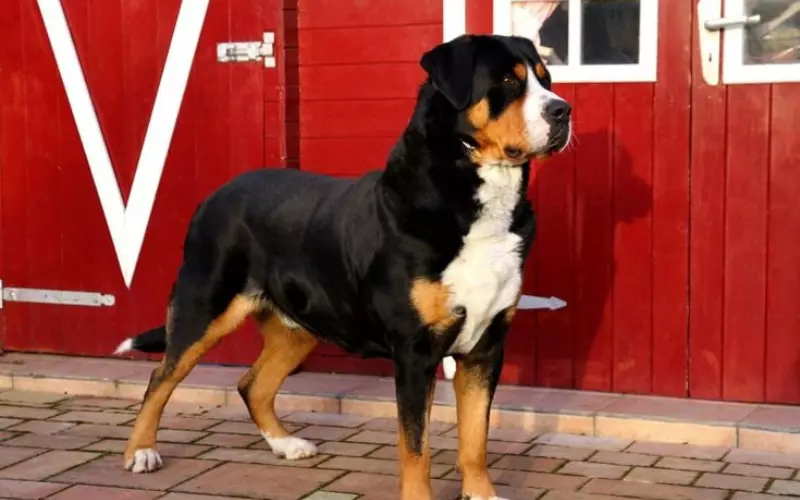
The Greater Swiss Mountain Dog population is relatively small, with an estimated number of around 5,000 to 8,000 dogs worldwide. This means there aren’t many of these dogs compared to other breeds. They are considered a rare breed, but efforts are being made to preserve and protect them.
Unfortunately, if the Greater Swiss Mountain Dog were to become extinct, it would mean that no more dogs of this breed would be left in the world. This would be very sad, as many people love these dogs for their gentle nature and loyalty. We need to take care of and protect animals like the Greater Swiss Mountain Dog so they don’t disappear forever.
Ideally, we should work towards increasing the population of the Greater Swiss Mountain Dog to ensure its survival. This can be done by responsible breeding practices and raising awareness about this beautiful breed. By doing so, we can help prevent the extinction of these dogs and ensure that they continue to bring joy and companionship to people for generations to come.
Conclusion
The Greater Swiss Mountain Dog is a fascinating animal with a rich history and interesting facts. This large dog breed originated in Switzerland and was traditionally used for various tasks such as herding cattle and guarding farms. Today, they make loyal and gentle companions for families.
One of the remarkable features of the Greater Swiss Mountain Dog is its size. These dogs can grow up to be quite big, with males reaching heights of 25 to 28 inches and weighing between 105 and 140 pounds. However, their size doesn’t stop them from being friendly and affectionate animals.
Regarding habitat and classification, the Greater Swiss Mountain Dog can adapt to different environments but thrives best in homes with plenty of space to roam and play. They belong to the working dog group, which means they are intelligent and excel at tasks that require physical strength and mental agility.
The Greater Swiss Mountain Dog is a magnificent animal with a long history and unique characteristics. Its large size, friendly nature, and ability to adapt to various habitats make it an excellent family companion. So, if you consider adding a loyal and loving pet to your household, the Greater Swiss Mountain Dog might be the perfect choice.
Frequently Asked Questions about Greater Swiss Mountain Dog (FAQ’s)
What is the size and weight range of a Greater Swiss Mountain Dog?
Greater Swiss Mountain Dogs typically weigh between 85 and 140 pounds and measure between 23.5 and 28.5 inches in height.
Are Greater Swiss Mountain Dogs good with children?
They are known to be great with children and are often called “gentle giants.”
Do they require a lot of exercise?
These dogs have moderate to high exercise needs, so daily walks and play sessions are necessary to keep them happy and healthy.
Are Greater Swiss Mountain Dogs prone to health issues?
Like any breed, they can have specific health concerns, including hip and elbow dysplasia, bloat, and some genetic conditions. Regular vet check-ups are essential.
Do they shed a lot?
Greater Swiss Mountain Dogs have a dense double coat that sheds moderately year-round and more heavily during shedding seasons.
Are they easy to train?
Generally, they are intelligent and trainable, but early socialization and consistent positive reinforcement are key to successful training.
Are they good guard dogs?
Greater Swiss Mountain Dogs are naturally protective and will alert their owners to potential threats, making them excellent guard dogs.
How long do they live?
On average, Greater Swiss Mountain Dogs have a lifespan of 10 to 12 years.
Are they good with other pets?
If properly socialized from a young age, Greater Swiss Mountain Dogs can get along well with other pets, including cats, although individual temperament may vary.
Do they have a high prey drive?
While Greater Swiss Mountain Dogs have a moderate prey drive, early training and socialization can help curb unwanted chasing instincts.
Are they suitable for apartment living?
Due to their large size and exercise needs, Greater Swiss Mountain Dogs generally require a spacious environment with a backyard. They may not be suitable for apartment living unless provided with ample exercise opportunities.
How often do they need grooming?
They have a low-maintenance coat, so brushing once or twice weekly is usually sufficient. Regular nail trims, teeth brushing, and ear cleaning should also be part of their grooming routine.
Do they have any specific dietary requirements?
Greater Swiss Mountain Dogs have a higher protein requirement, so a balanced diet that meets their nutritional needs is essential. Consult with a veterinarian for specific dietary recommendations.
Are they prone to excessive drooling?
While they may drool occasionally, Greater Swiss Mountain Dogs are not considered excessive droolers compared to some other breeds.
Are they good hiking companions?
Absolutely! These dogs are energetic and athletic, making them excellent hiking companions. They enjoy outdoor activities and being part of an active lifestyle.

Hi there! I’m Morgan Gutierrez, and I love animals! I work as a Seasonal Animal Care Specialist at Brookfield Zoo and also teach people about animals, which is super fun. I studied at Valparaiso University in Lockport, Illinois, where I learned even more about these amazing creatures.
I’m not just about taking care of animals; I write articles about them, too! I explore and share many interesting animal stories, from cute kittens to giant elephants.
In the past, I’ve worked with veterinarians, helped with research, and even been an Animal Ambassador, bringing animals closer to people. Animals are my passion, and I enjoy helping others learn about them. So, if you ever want to know about animals, feel free to ask. I’ll explain it in a way that’s easy to understand, just like talking to a friend!












